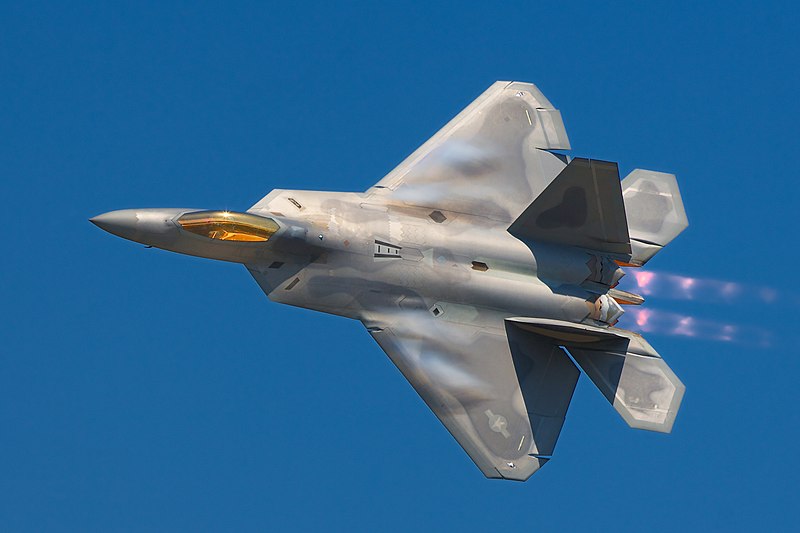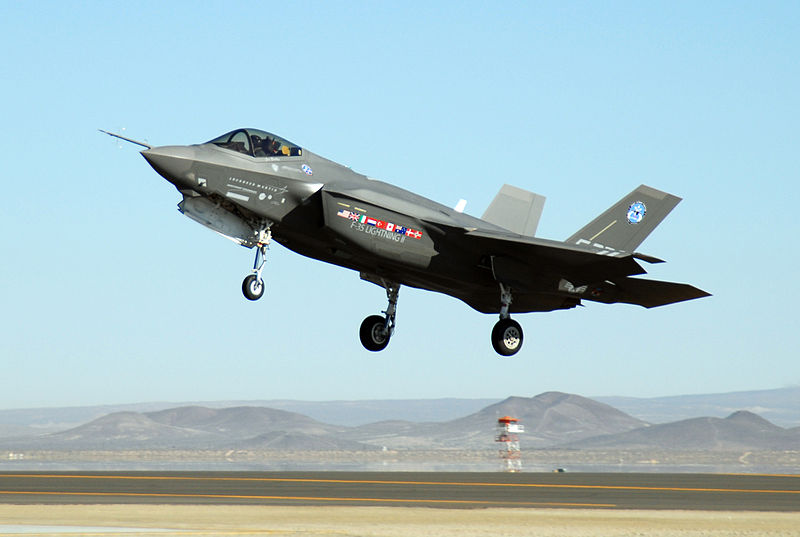Stealth Capable
United States of America
The Lockheed Martin/Boeing F-22 Raptor is a single-seat, twin-engine fifth-generation supermaneuverable fighter aircraft that uses stealth technology. It was designed primarily as an air superiority fighter, but has additional capabilities that include ground attack, electronic warfare, and signals intelligence[6] roles. Lockheed Martin Aeronautics is the prime contractor and is responsible for the majority of the airframe, weapon systems and final assembly of the F-22. Program partner Boeing Defense, Space & Security provides the wings, aft fuselage, avionics integration, and all of the pilot and maintenance training systems.
The aircraft was variously designated F-22 and F/A-22 during the years prior to formally entering USAF service in December 2005 as the F-22A. Despite a protracted and costly development period, the United States Air Force considers the F-22 a critical component for the future of US tactical air power, and claims that the aircraft is unmatched by any known or projected fighter,[2] while Lockheed Martin claims that the Raptor's combination of stealth, speed, agility, precision and situational awareness, combined with air-to-air and air-to-ground combat capabilities, makes it the best overall fighter in the world today.[7] Air Chief Marshal Angus Houston, Chief of the Australian Defence Force, said in 2004 that the "F-22 will be the most outstanding fighter plane ever built."[8]
The high cost of the aircraft, a lack of clear air-to-air combat missions because of delays in the Russian and Chinese fifth generation fighter programs, a US ban on Raptor exports, and the ongoing development of the supposedly cheaper, and more versatile F-35 resulted in calls to end F-22 production.[N 1] In April 2009 the US Department of Defense proposed to cease placing new orders, subject to Congressional approval, for a final procurement tally of 187 Raptors.[10] The National Defense Authorization Act for Fiscal Year 2010 was signed into law in October 2009 without funding for further F-22 production.[11]

People,s Republic of China
The Chengdu J-20 (simplified Chinese: 歼二十; traditional Chinese: 殲二十; pinyin: Jiān èr shí; literally "Annihilator Twenty") is a fifth generation stealth, twin-engine fighter aircraftprototype developed by Chengdu Aircraft Industry Group for the Chinese People's Liberation Army Air Force.[4][5] In late 2010, the J-20 underwent high speed taxiing tests. The J-20 made its first flight on 11 January 2011.[1][6][7] General He Weirong, Deputy Commander of the People's Liberation Army Air Force said in November 2009 that he expected the J-20 to be operational in 2017–2019.[3]

Russia
The Sukhoi PAK FA (Russian: Перспективный авиационный комплекс фронтовой авиации, Perspektivny aviatsionny kompleks frontovoy aviatsii, literally "Prospective Airborne Complex - Frontline Aviation") is a fifth-generation jet fighter being developed by Sukhoi OKB for the Russian Air Force.
The current prototype is Sukhoi's T-50.[13] The PAK FA, when fully developed, is intended to replace MiG-29s and Su-27s in the Russian inventory and serve as the basis of theSukhoi/HAL FGFA project being developed with India.[14][15] A fifth generation jet fighter, the T-50 performed its first flight 29 January 2010.[3][16] Its second flight was on 6 February and its third on 12 February 2010. As of 31 August 2010, it had made 17 flights and by mid-November, 40 in total. The second prototype was to start its flight test by the end of 2010, but this has been delayed until 2011.[17][18][19][20]
Sukhoi director Mikhail Pogosyan has projected a market for 1,000 aircraft over the next four decades, which will be produced in a joint venture with India, two hundred each for Russia and India and six hundred for other countries.[21] He has also said that the Indian contribution would be in the form of joint work under the current agreement rather than as a joint venture.[22] The Indian Air Force will "acquire 50 single-seater fighters of the Russian version" before the two seat FGFA is developed.[23] The Russian Defense Ministry will purchase the first 10 aircraft after 2012 and then 60 after 2016.[24][25] The first batch of fighters will be delivered without the "Fifth generation" engines.[26] Ruslan Pukhov, director of the Centre for Analysis of Strategies and Technologies, has projected that Vietnam will be the second export customer for the fighter.[27] The PAK-FA is expected to have a service life of about 30–35 years.

Lockheed Martin F-35 Lightning II
he Lockheed Martin F-35 Lightning II is a family of single-seat, single-engine, fifth generation multirole fighters under development to perform ground attack, reconnaissance, and air defense missions with stealth capability.[7][8] The F-35 has three main models; one is a conventional takeoff and landing variant, the second is a short take off and vertical-landingvariant, and the third is a carrier -based variant.
The F-35 is descended from the X-35, the product of the Joint Strike Fighter (JSF) program. JSF development is being principally funded by the United States, with the United Kingdomand other partner governments providing additional funding.[9] It is being designed and built by an aerospace industry team led by Lockheed Martin.[9] The F-35 took its first flight on 15 December 2006.[1]
The United States intends to buy a total of 2,443 aircraft for an estimated US$323 billion, making it the most expensive defense program ever.[10] The United States Air Force (USAF) budget data in 2010, along with other sources, projects the F-35 to have a flyaway cost that ranges between US$89 million and US$200 million over the planned production of F-35s, depending on the variant.[11][12][13][14] Cost estimates have risen to $382 billion for 2,443 aircraft, at an average of $92 million each.[15] However, rising program cost estimates have cast doubt on the actual number to be produced for the U.S.[15] In January 2011 Defense Secretary Robert Gates expressed the Pentagon's frustration with the skyrocketing costs of the F-35 program when he said "The culture of endless money that has taken hold must be replaced by a culture of restraint."[15] Focusing his attention on the troubled VTOL F-35B Gates ordered "a two-year probation", saying it "should be canceled" if corrections are unsuccessful.[15] Private analysts say the whole F-35 program is becoming a money pit. "The incredibly unfortunate phrase 'too big to fail' applies to this aircraft more than any other defense program", said Richard Aboulafia, an aerospace industry analyst with the Teal Group.






